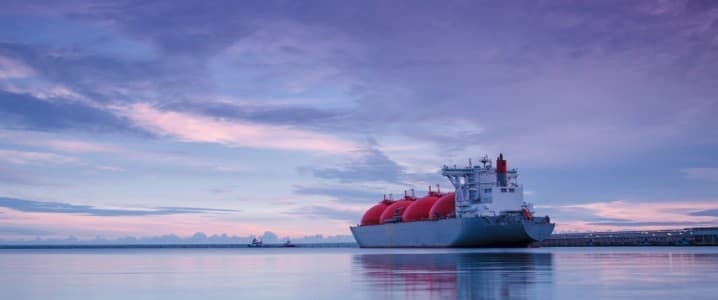
Demand for floating LNG projects is soaring, both in gas importing countries and gas-producing nations, as energy security and ways to curb skyrocketing energy bills for industries and households top the energy policy agenda after Russia slashed gas supply to Europe earlier this year.
Investors are also more inclined to fund lower-cost, smaller offshore FLNG projects with quicker paybacks than huge onshore LNG facilities that take more than double the time to build.
“The reputation of floating LNG is definitely improving,” Fraser Carson, an analyst at energy consultancy Wood Mackenzie, told Bloomberg. “We are seeing lenders much more willing to provide financing for FLNG projects,” Carson added.
Over the past few months, FLNG projects have gathered momentum, both in producing and importing countries.
Earlier this month, Italy’s Eni announced the first shipment of LNG produced by Coral Sul FLNG from the Coral gas field in the ultra-deep waters of the Rovuma Basin off Mozambique. The project, sanctioned in 2017, came on stream after just five years, in line with the initial budget and schedule, despite the disruptions caused by Covid, the Italian energy major said.
In Europe, FSRUs are being set up in Germany, the Netherlands, and Finland. Eemshaven in the Netherlands and Wilhelmshaven and Brunsbüttel in Germany are expected to be operational by the end of this year.
Currently, the faster and cheaper option to have more LNG import facilities is the hiring of FSRUs, Kaushal Ramesh, Senior Gas & LNG Analyst at Rystad Energy, told Financial Times’ Alan Livsey earlier this year
“There are few use cases better suited to FSRUs than Europe’s situation right now,” Ramesh told FT.
Onshore LNG import facilities are much more expensive, take years to build, and ultimately, and they could remain stranded assets if Europe reaches its goal to cut gas consumption by 30% by 2030 and greenhouse gas emissions by at least 55% by 2030—its interim target on the road to net-zero emissions by 2050.
So countries in northern Europe are now looking to charter FSRUs for LNG imports to secure gas supply for the next few winters until the EU makes meaningful progress in cutting gas consumption through energy efficiency measures and boosting hydrogen and renewable gas use.
For example, on the day in May on which Gazprom said it would cut off all gas supply to Finland effective immediately, Finland’s transmission network company Gasgrid Finland Oy and U.S.-based Excelerate Energy signed a ten-year lease agreement for the LNG terminal ship Exemplar to ensure sufficient gas supply in Finland.
“Leasing an LNG terminal vessel is extremely important, as it ensures security of supply for gas supplies in both Finland and Estonia,” Gasgrid CEO Olli Sipilä said at the time.
In the Netherlands, gas provider Gasunie built a floating LNG terminal in Eemshaven in the Groningen area, and commissioned it in September, just six months after concept.
Germany, for its part, has already chartered several FSRUs since May, with two of those, at Wilhelmshaven and at Brunsbüttel, expected to begin operations by the end of this year. Last week, Germany said it had completed the construction of the Wilhelmshaven floating LNG terminal.
Currently, Germany has six such FLNG terminals planned by the end of 2023. Those FSRUs will have the capacity to import around a third of Germany’s annual gas consumption, according to Reuters estimates.
True, FLNG projects have much lower production/import capacity than the large onshore plants. But they are the cheaper and faster alternative to meet short-to-medium term gas demand in Europe.